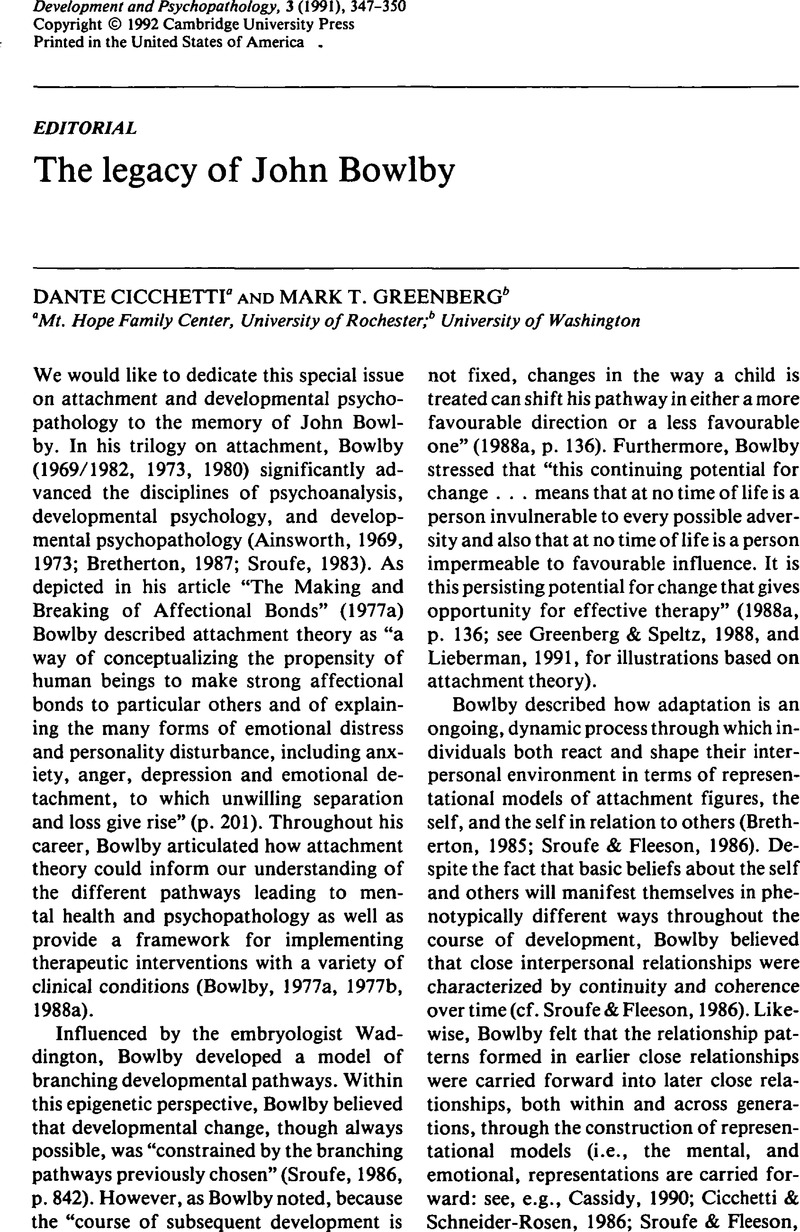Crossref Citations
This article has been cited by the following publications. This list is generated based on data provided by Crossref.
Cohn, Deborah A.
Cowan, Philip A.
Cowan, Carolyn P.
and
Pearson, Jane
1992.
Mothers' and fathers' working models of childhood attachment relationships, parenting styles, and child behavior.
Development and Psychopathology,
Vol. 4,
Issue. 3,
p.
417.
Pearson, Jane L.
Cohn, Deborah A.
Cowan, Philip A.
and
Cowan, Carolyn Pape
1994.
Earned- and continuous-security in adult attachment: Relation to depressive symptomatology and parenting style.
Development and Psychopathology,
Vol. 6,
Issue. 2,
p.
359.
Cicchetti, Dante
Toth, Sheree L.
and
Lynch, Michael
1995.
Advances in Clinical Child Psychology.
p.
1.
Srael, Pravin I
and
Diamond, Guy S.
2009.
Tilknytningsbasert familieterapi for deprimert ungdom.
Fokus på familien,
Vol. 37,
Issue. 1,
p.
36.
Wang, Daoyang
Dong, Dan
Nie, Peixin
and
Wang, Cuicui
2018.
Factor Structure of the Chinese Version of the Parent Adult-Child Relationship Questionnaire.
Frontiers in Psychology,
Vol. 9,
Issue. ,
Eisenberg, Jackie
Lippolt, Katrina
and
Holler, Richard
2018.
Encyclopedia of Evolutionary Psychological Science.
p.
1.
Eisenberg, Jackie
Lippolt, Katrina
and
Holler, Richard
2021.
Encyclopedia of Evolutionary Psychological Science.
p.
4284.
Parashar, Niharika
Kellermann, Ana
Arnau, Randolph C.
and
Green, Bradley A.
2025.
Personality Disorders, Attachment, and Social Cognition.
Journal of Psychopathology and Behavioral Assessment,
Vol. 47,
Issue. 1,



